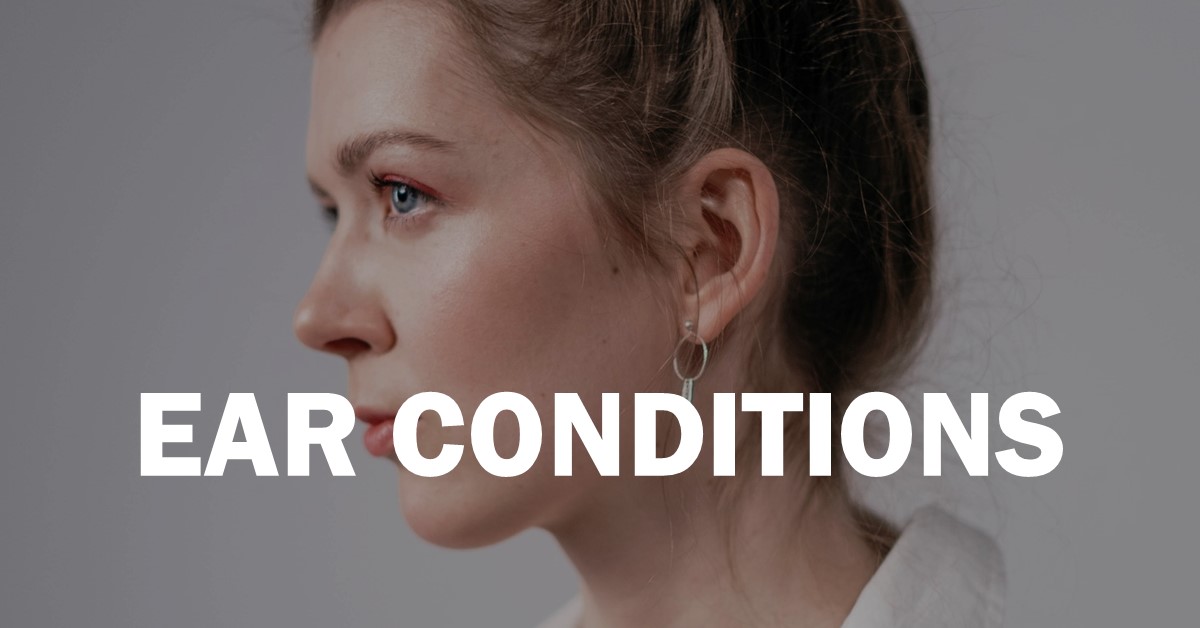Our Ear Conditions Services
We treat many types of ear conditions, many of them some form of ear infection. If you decide to come in to meet the Naugatuck Valley ENT team to have your condition diagnosed, we will provide recommended treatment for an ear infection or ear condition. The treatment will depend on the patient’s age and the severity of the condition. If you or your child is experiencing ear pain with a fever, please call our office immediately to make an appointment. You can contact Naugatuck Valley ENT at (203) 578-4630.
Ear Infections
Ear Infections
Ear infections can be annoying and painful but most often can be resolved within a couple of days.
What is an ear infection?
Ear infections are typically caused by viruses or bacteria. Often an ear infection will begin after a cold or other respiratory infection. The bacteria or virus move from the back of the throat through one of the Eustachian tubes to the middle ear. Some ear infections will resolve on their own while some will require antibiotics.
Types of infections
There are a few different types of ear infections.
- Outer Ear Infection: When the outer ear canal is infected, the condition is called swimmer’s ear (otitis externa).
- Middle ear infection (acute otitis media) is an infection in the middle ear.
- Otitis media with effusion: when fluid builds up in the middle ear without being infected and without causing fever, ear pain, or pus build-up in the middle ear.
When to seek medical treatment
Our recommended treatment for an ear infection depends upon the patient’s age and the severity of the infection. Some ear infections get better without the use of antibiotics. If you or your child is experiencing ear pain with a fever, please call our office to make an appointment. If it’s determined that a bacterial infection is present, it may be necessary to treat the bacterial infection with antibiotics. The antibiotics prescribed will be based on age, severity of infection, and whether the patient has an allergy to penicillin.
Managing Discomfort
While you wait for your or your child’s ear infection to clear, there are a couple of things you can do to manage the discomfort. First, you can place a warm compress (a cloth gently soaked in warm water) over the affected ear. Next, you can take ibuprofen or acetaminophen which will reduce the swelling and the pain.
Other Ear Conditions
We treat many types of ear conditions, many of them some form of ear infection.
- Cholesteatoma is an abnormal skin growth or skin cyst trapped behind the eardrum, or the bone behind the ear. Cholesteatomas begin as a build-up of ear wax and skin, which causes either a lump on the eardrum or an eardrum retraction pocket.
- Earaches, or pain in the ear, is common and can occur in both children and adults.Earaches can be due to a problem with the ear or structures close to the ear. The pain may be dull, sharp, or burning and can occur in one or both ears.
- Barotrauma is when the eustachian tube in your middle ear is blocked due to altitude or pressure changes, air cannot be equalized, and a vacuum occurs. This stretches the eardrum and causes pain and occasionally fluid.
- Earwax (Cerumen Impaction) is produced by special wax-forming glands located in the skin of the outer one-third of the ear canal. It is normal to have cerumen in ear canal as this waxy substance serves as a self-cleaning agent with protective, lubricating, and antibacterial properties. The absence of earwax may result in dry, itchy ears. Some times earwax can build up in the ears and causing discomfort and hearing difficulties.
- Otosclerosis a condition of abnormal bone growth around one of the three small bones in the middle ear space called the stapes. When bone around the stapes hardens, the bone cannot move freely, which limits the ability to properly transmit sound. This results in hearing loss; the less movement of the bone, the greater the degree of hearing loss.
- Swimmer’s Ear (Otitis Externa) is a painful condition that affects the outer ear and ear canal that is caused by infection, inflammation, or irritation. These symptoms often occur after water gets trapped in your ear, especially if the water has bacteria or fungal organisms in it. Because this condition commonly affects swimmers, it is known as swimmer’s ear.
- Tinnitus is not a disease per se but condition where the patient will hear a noise in their ears, either a constant high- or low-pitched ringing, or an intermittent or constant roaring in ears, or a pulsation or beating noises in ears.

